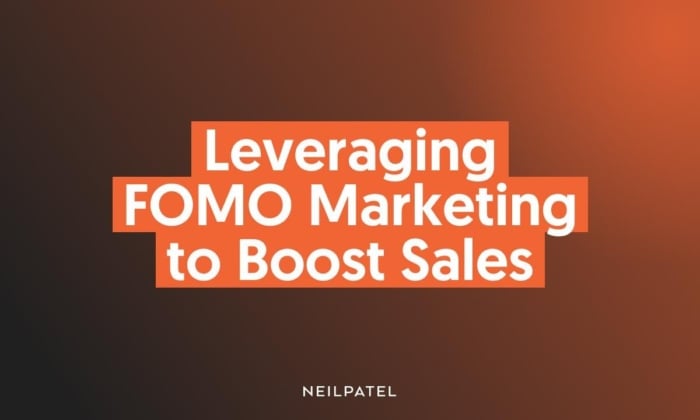
Are you looking for a way to enhance your sales and improve customer engagement? Then I’ve got the ideal solution.
It’s called FOMO marketing, or fear of missing out marketing.
FOMO is a marketing psychology tactic that gives consumers a sense of urgency and motivates them to act.
In the following piece, I’ll explore the psychology behind it and how it influences consumer decision-making.
We’ll also discuss strategies for creating FOMO in marketing and how social media plays a role in it, as well as some of the top examples in the space.
With that said, there are also additional ethical considerations and emerging trends that are changing how we approach this practice, which I’ll be covering as well.
Want to find out more? Here we go!
Key Takeaways on FOMO Marketing
- FOMO marketing, or fear of missing out marketing, is a psychology-driven tactic that creates a sense of urgency and motivates consumers to act.
- FOMO marketing appeals to consumers’ emotional triggers, such as the need to feel part of something and the fear of missing out on a good deal.
- Marketers can use various strategies to create FOMO in their campaigns, such as limited-time offers, special editions, and social proof.
- Social media plays a crucial role in FOMO marketing, as it allows brands to create a sense of exclusivity and engage with their audience in real time.
- Ethical considerations are essential when using FOMO marketing, and brands should be transparent and honest with their audience.
- Businesses can use FOMO marketing to boost sales and improve customer engagement, but it should be incorporated into a broader marketing strategy and not overused.
FOMO Marketing Psychology
Ever feel like you’re missing out? Sure you do! And it’s that sense of anxiety that marketers often rely on when trying to sell us something.
FOMO marketing acts as a psychological trigger, and we see examples of it every day. You know what I mean. All those emails with titles like “Limited Stock,” “Expiring,” or “Time is running out” in the subject line.
Although the headlines differ, they all achieve the same thing: They give consumers a sense of urgency and make them feel they must act now, or they’ll miss out on something good.
As this image from CleverTap illustrates, FOMO also appeals to our need to feel part of something, and, of course, many of us don’t want to miss out on a bargain.
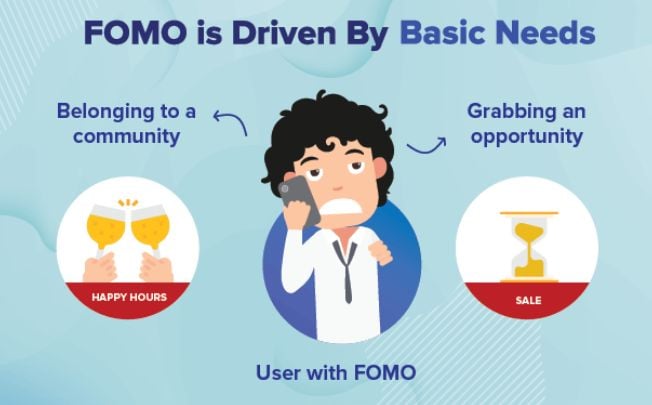
These emotions get us to click through to a special offer or a limited-edition product, and then additional sales techniques kick in. For example, if the consumer is still debating, a pop-up might offer a ten percent discount. If we accept that offer, brands may tempt us with further deals, like free shipping, if we spend more than $100.
Understanding the Emotional Triggers of FOMO
There’s more to FOMO marketing than the fear we’re missing out on a special deal or a trending product.
Using the FOMO marketing strategy plays on our emotional triggers, giving us a sense of scarcity around a purchase.
It can also make us feel “special.” Like we’re in an exclusive group because we’re getting deals that aren’t always available, or only available to us.
Here’s a great example from Airbnb:

Businesses tap into these emotions, by crafting marketing campaigns around our emotional triggers. Basically, FOMO satisfies the consumers’ need for validation and belonging, while improving customer engagement and securing more sales for the retailer.
Exploring How FOMO Influences Consumer Decision-Making
FOMO marketing makes the decision-making process easy for us. Most of the time, we don’t even have time to think about it. You’ve probably been there. For instance, the bargain laptop on Black Friday, or the special offer vacation deal when you were just browsing.
You feel you’re about to miss an awesome deal or trending product, making you act impulsively. It’s all about that sense of urgency I mentioned earlier.
Then there’s the social pressure that spurs you into action. Brands often use a notification with something like “114 buyers have brought this product”. Doesn’t that make you want to be buyer number 115?!
FOMO causes us to make snap decisions.
That’s what makes FOMO marketing so good for driving sales, with research showing it can increase click-throughs by 22 percent and conversion rates by 40 percent.
How to Create FOMO in Marketing
Now you understand FOMO marketing psychology, it’s time to look at using the technique in your advertising.
One proven method of FOMO marketing is offering limited-time deals or discounts, just like Amazon does Prime.

You can see how it works. “Prime Big Deal Days” sounds exclusive, and then the “Discover Prime now” call to action encourages you to click.
Another FOMO marketing tactic is showcasing high-demand products or items with limited availability. For example, the Coachella Music Festival does this with its festival tickets.
You can also use scarcity marketing by using time-limited offers and limited edition products. However, don’t overuse this technique, or you risk exhausting your audience with a mountain of special offers.
FOMO Marketing Strategy
You’ve already got some ideas to get you started, but let’s expand on this a bit. Here are some more suggestions you can implement.
- Go exclusive: Send out special offers on products, services, and events and stress the exclusivity in your email marketing. To get the most from this tactic, segment your email list first (more on that later).
- Use social proof: Got positive reviews from your happy customers? Awesome! Make sure you share them in your digital marketing. You could also work with influencers to get people talking about your product/service and make it sound like a must-have. User-generated content would work well here, too.
- Provide real-time updates: Use social media to update prospects on trending products and limited stock items. Include hashtags and phrases like “hot selling product” or “limited stock.”
- Create interactive content: Draw leads in with contests, polls, and challenges and build your email list. Use the data you collect to learn about your audience so you can market to them more effectively.
Using any of the above tips can cause a buzz around your brand. Another way to approach FOMO marketing is through social media.
How Social Media Plays a Role in FOMO Marketing
Sites like Pinterest, Instagram, Facebook, and TikTok allow businesses to showcase their products and services to a vast audience in real time. By using social media marketing, you can get people talking. Naturally, this makes others want to check out your brand because they don’t want to miss out.
And today, social media works so well as a marketing platform because so many of us regularly monitor our feeds just in case we miss out on something.

Harnessing the Power of FOMO on Social Platforms
Using social media allows us to create the sense of urgency and scarcity that I talked about earlier. By highlighting limited-time offers and exclusive deals, businesses can motivate customers to purchase.
Check out this post from Starling Bank on Instagram from a celebrity influencer couple demonstrating how easy it is to set up a joint account with the UK-based neobank in real time.
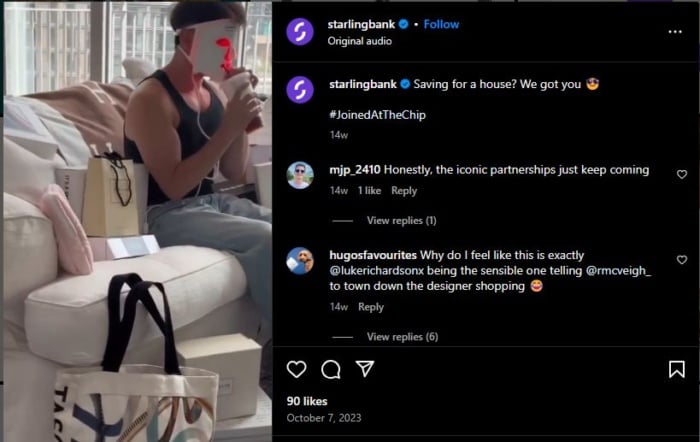
Encouraging User-generated Content to Create FOMO
By showcasing user-generated content (UGC) that highlights the benefits of your products or services, others can see the benefits. Depending on the type of product/service you’re selling, they can also see the fun other people are having.
That’s the most powerful thing about UGC: it’s authentic. It comes from other buyers who are already reaping the rewards, and it makes others want to share in it too.
How do you use UGC in your FOMO marketing?
You can do this by asking customers to share their experiences on social media and using relevant hashtags. Another way is by running contests that encourage customers to create and share content related to your brand to increase awareness.
Additionally, you could produce UGCs through testimonials and crafting your messaging around them.
For example, Klue details how 200,000+ users are already benefiting from its service and uses the statement alongside a user testimonial.
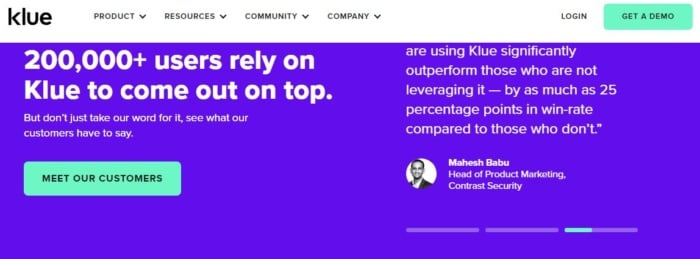
Running FOMO-driven Social Media Campaigns
Running FOMO-driven social media campaigns enables you to boost engagement and drive conversions. By tapping into consumers’ FOMO and using psychology to increase social media engagement, you can spur them into action.
To do this, you’ll need to craft compelling content that addresses your target market’s interests, needs, and pain points.
Time-limited offers, discounts, and behind-the-scenes access all add to the sense of exclusivity and excitement, too.
Here’s an example from Hamilton’s Fine Furniture.

However, ensure you keep the balance between creating a sense of urgency and not coming across as pushy.
FOMO in Email Marketing
Email marketing is one of the top channels for conversions. Imagine the results when you integrate FOMO marketing into your messaging.
Look at this email from Motley Fool. You can see how it uses FOMO marketing.
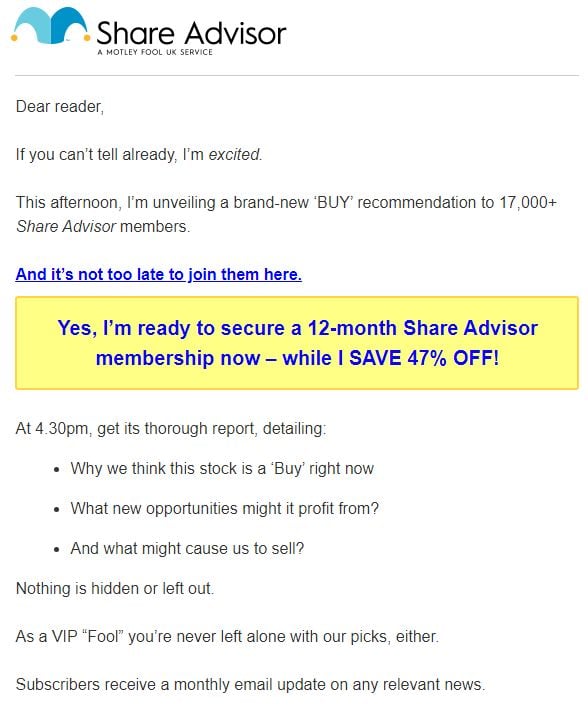
- “It’s not too late to join them here.” (Others are already benefiting from the special offer).
- “Buy recommendations to 17,000 + Share Advisor (Sign up and you’ll be part of an elite group)
- “Save 47 percent off”. (It’s a bargain)
Then there’s the sheer excitement in the tone; I’m almost tempted to sign up myself!
But to get that all-important click-through, you’ll want to take time over your subject lines.
Crafting Subject Lines and Content to Evoke FOMO
When crafting subject lines, you need to put yourself in your customers’ shoes and understand what makes them tick. To help you with this stage, begin by looking over your customer personas, or use these templates to draw some up.
When you have those insights, you’re ready to start writing compelling subject lines and content that speak directly to your customers’ desires and needs.
For example, you could use subject lines such as “limited time offer,” “exclusive access,” or “trending products.”
Here’s an image for further inspiration:
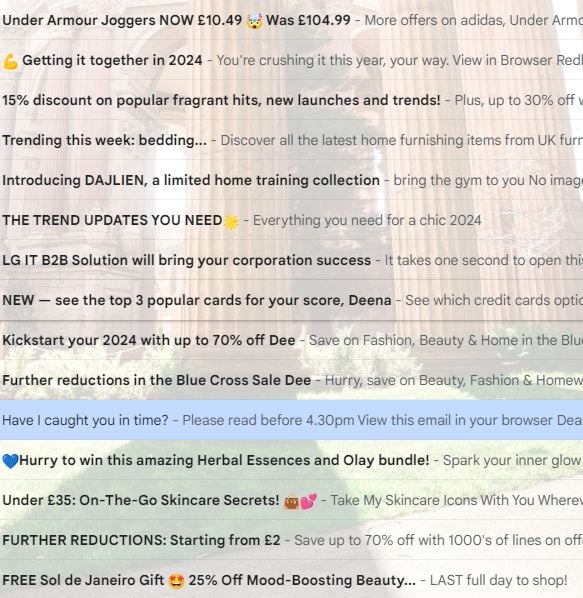
Showcasing Limited-time Offers and Exclusive Deals
One tried and tested FOMO marketing technique is time-limited discounts. These types of emails can get consumers to make immediate purchasing decisions.
Additionally, you could offer a prize, like in this example:
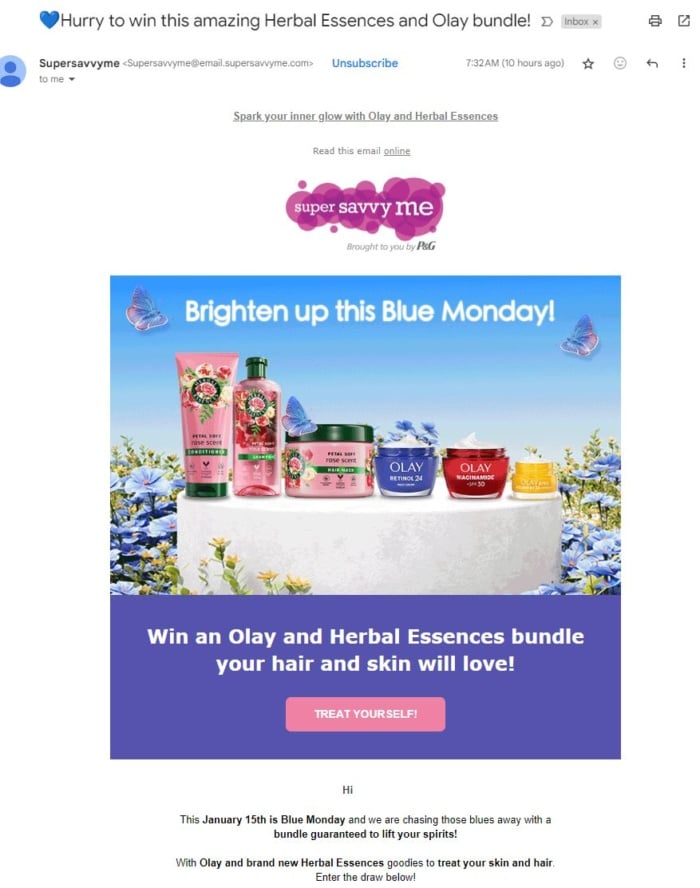
You could also send exclusive access/VIP memberships, limited stock or availability emails, or preview/early access emails, and personalized deals/rewards emails, too.
Using Segmentation to Personalize FOMO-inducing Messages
You’ll gain numerous benefits from email segmentation, like increased open rates and more conversions.
By segmenting your audience based on various factors such as demographics, interests, and behaviors, you can create highly personalized messages that are more likely to resonate with them.
For instance, through segmentation, garden center chain Dobbies experienced a 199 percent increase in incremental revenue, a 10 percent increase in average order value, and a 17 percent surge in customer visits.
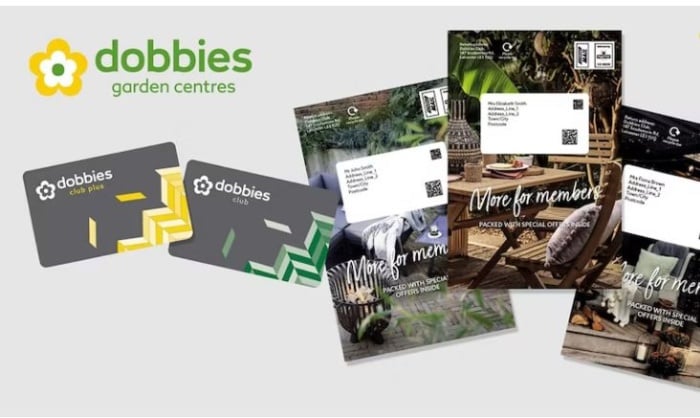
And when you combine segmentation with FOMO marketing, that’s your chance to get even more customers rushing to your website to pick up that extra special deal.
Measuring and Analyzing FOMO Campaigns
Whichever approach you take to your FOMO marketing, you’ve got to track your results.
Analyzing your metrics gives you insights into what’s effective and which tactics you need to ditch. Get a short-term and long-term look at your metrics to identify seasonal trends that only perform well at specific times.
These are some metrics to monitor:
- Engagement: Here, you’re measuring click-throughs, social media interactions, the time visitors spend on your website, comments, shares, and email open rates.
- Measure conversion rates: This is one of your most important metrics. You’re looking at the percentage of people who bought from you, signed up for a newsletter, or downloaded a freebie.
- Social media metrics: Track metrics like shares, mentions, likes, comments, impressions, and new followers. You can also use social media listening tools like Sprout Social or Brand Watch to see what people are saying about you.
- Brand awareness: Measuring brand awareness allows you to spot gaps in your marketing strategy and lets you know if you’re gaining awareness among your target audience. You can analyze this metric through search volume, traffic, and consumer surveys.
Finally, conduct surveys and gain feedback from consumers who participated in your FOMO marketing. Use this as a learning experience to understand what your customers loved about your campaign, and what you can do better.
Ethical Considerations in FOMO Marketing
Okay. You can see the benefits of FOMO marketing, but there are some ethical considerations, too.
First up, you’re encouraging consumers to make a snap decision. That’s great for you as the seller. However, FOMO often leads to increased revenue, but it can pressure consumers to buy products they hadn’t intended to.
How do you balance this out? Use FOMO marketing sparingly. That way, you’re not pressuring buyers to purchase too often, and your customers won’t tire of your constant special offers.
Transparency is vital as well.
Balancing FOMO Tactics with Transparency
Every brand needs to be honest with its customers. That means not making false claims about your customer and providing accurate information about product availability. For instance, you shouldn’t:
- Claim your product is a limited edition when it isn’t.
- Exaggerate potential savings.
- Make untrue claims about the urgency of an offer.
Additionally, don’t go hiding the terms and conditions. If any limitations apply to your FOMO marketing, spell these out so shoppers can see them.
Avoiding Misleading Practices in FOMO Campaigns
Avoiding misleading practices in FOMO marketing is crucial for building trust and maintaining ethical standards. For example, a time-limited offer or discount should be a genuine deal.
For your customers to make informed decisions, you’ll also want to be clear in your terms and conditions. If limitations and restrictions apply, you must explain them to prevent misunderstandings.
Another way to avoid misleading practices is to avoid using manipulative language or tactics. Using overly aggressive or manipulative language can pressure or coerce customers into buying.
You’ll want to make sure your reviews are honest, too. The FTC will take action against false reviews, and using misleading pricing can land you in legal hot water, too.
Here’s what the FTC has to say about truth in advertising.
FOMO Marketing Trends
FOMO marketing isn’t going anywhere, and there are top trends developing, like:
- Personalization: You can segment your customer data to create personalized offers and promotions that you tailor to individual preferences and behaviors.
- Social media: Leveraging social media channels to create buzz and excitement around limited-time offers and exclusive promotions isn’t new, but marketers have more options these days, with sites like TikTok lending themselves well to marketing.
- Influencer marketing: Teaming with influencers to promote products or services and create a sense of exclusivity or scarcity.
- Interactive content: Creating interactive content such as quizzes or surveys encourages your customers to engage with your brand and feel a sense of urgency to act. You can also offer a small reward for taking part.
- Mobile optimization: Why not go mobile? Use FOMO marketing campaigns for mobile devices so consumers can access and take advantage of time-sensitive offers on the go.
- Use artificial intelligence: AI-powered tools let you analyze customer data and behavior patterns and create personalized FOMO marketing campaigns that are more effective and relevant to your audience.
- Augmented reality: Use augmented reality technology to create immersive experiences that showcase limited-edition products or promotions in a more engaging and interactive way. Target does this with its “See it in your space” app.
FAQs
To create an effective FOMO marketing campaign, businesses can use a variety of tactics, such as creating limited-time offers, exclusive promotions or discounts, and flash sales.
Additionally, businesses can build hype around new product launches or events by offering sneak peeks and sharing teasers on social media.
By tapping into the consumer’s fear of missing out, businesses can encourage customers to take immediate action and drive sales.
Suitable platforms for FOMO marketing include Instagram, Facebook, Twitter (now X), email marketing platforms or service providers like Mailchimp or Klaviyo, and website pop-ups.
You should use FOMO marketing occasionally to avoid overwhelming customers rather than as a go-to strategy to ramp up sales.
Conclusion
FOMO marketing is a popular tool to help businesses drive sales and build audience loyalty. That’s because customers are more likely to return when they feel like they’re part of something special.
Businesses can tap into the consumer’s fear of missing out on a great deal or opportunity by creating urgency, scarcity, and exclusivity. FOMO also plays on people’s desire to feel like they belong.
Successful brands like Airbnb and Nike leverage FOMO to create irresistible offers that convert, and you can do the same. However, it’s essential to strike a balance and not overuse FOMO marketing, as this can lead to desensitization and decreased effectiveness.
Is FOMO marketing an effective strategy in 2024? Share your thoughts with me below!
[ad_2]
Article link
